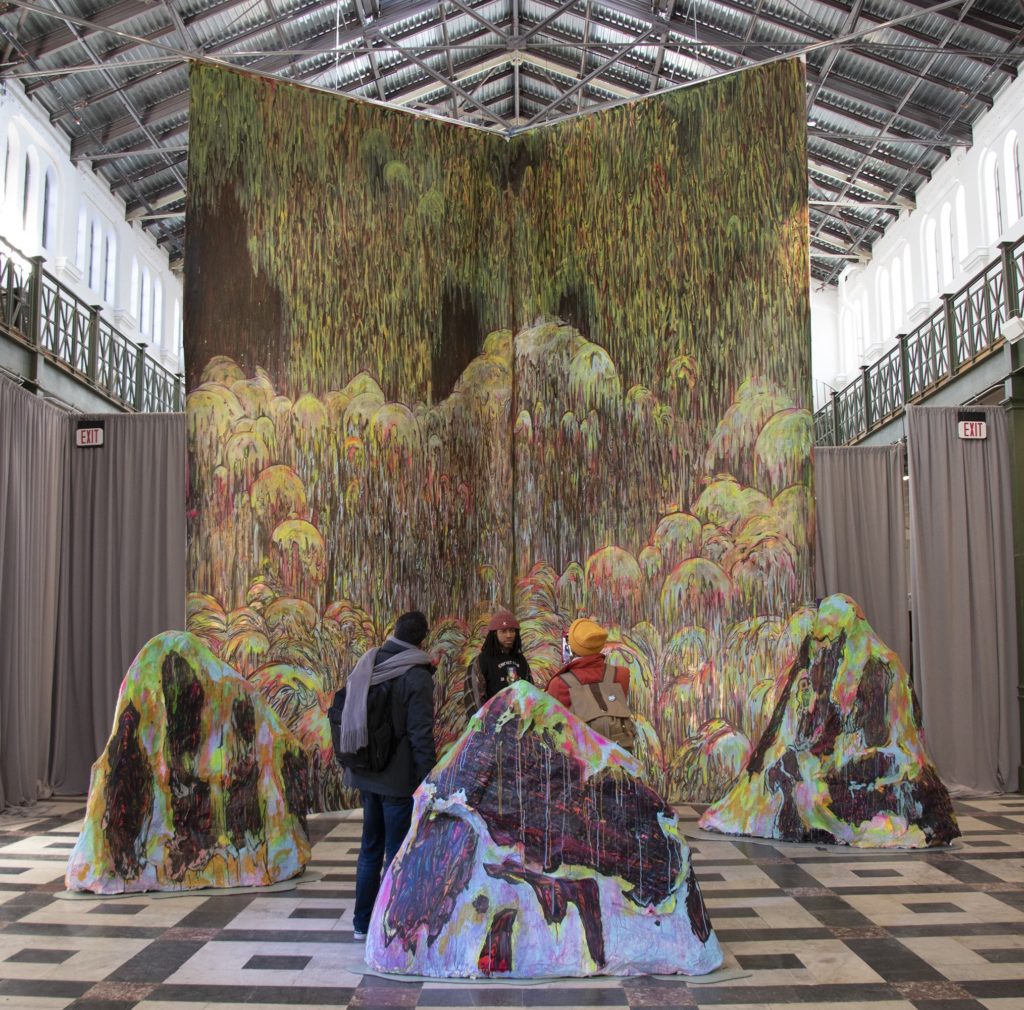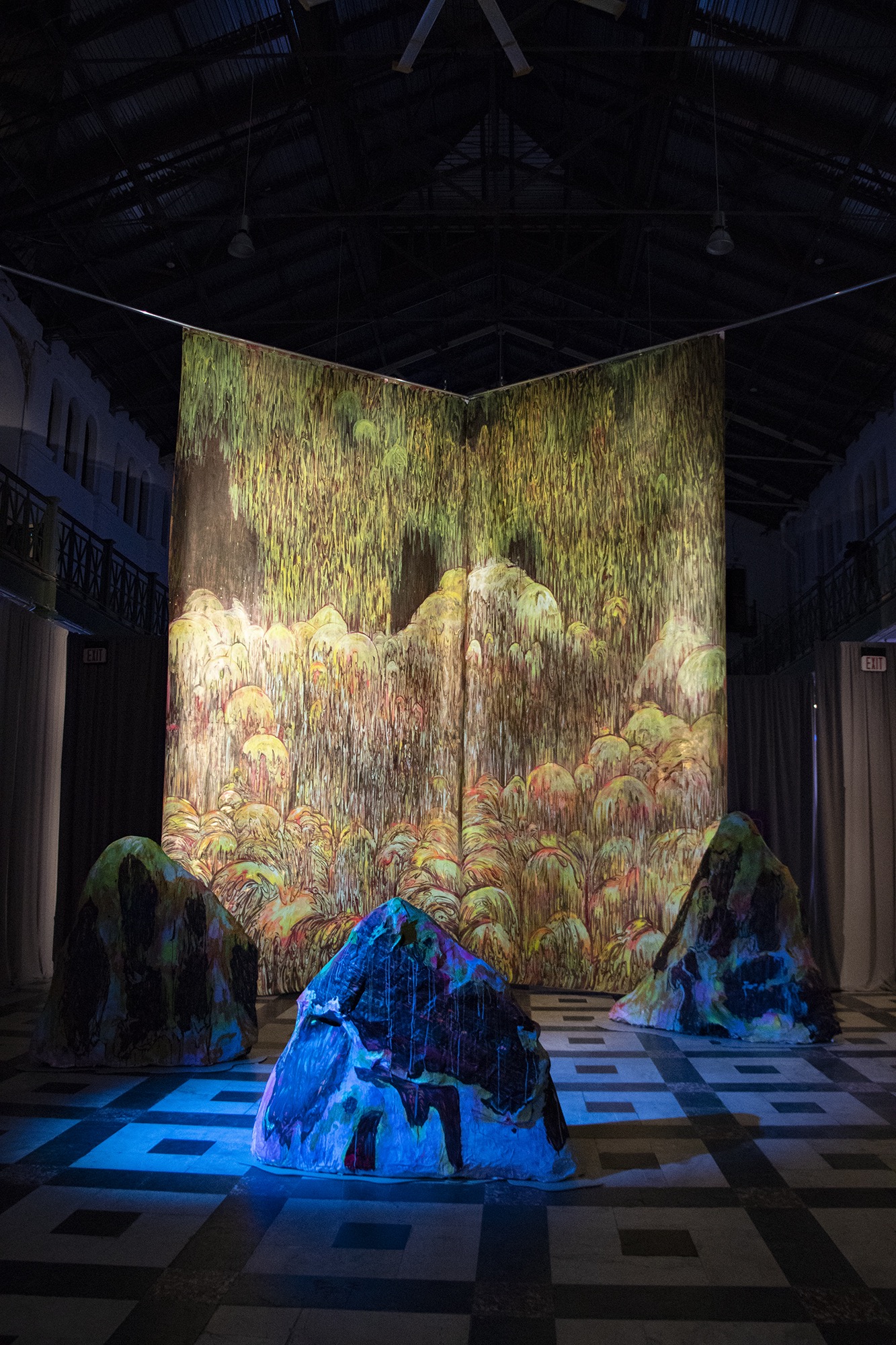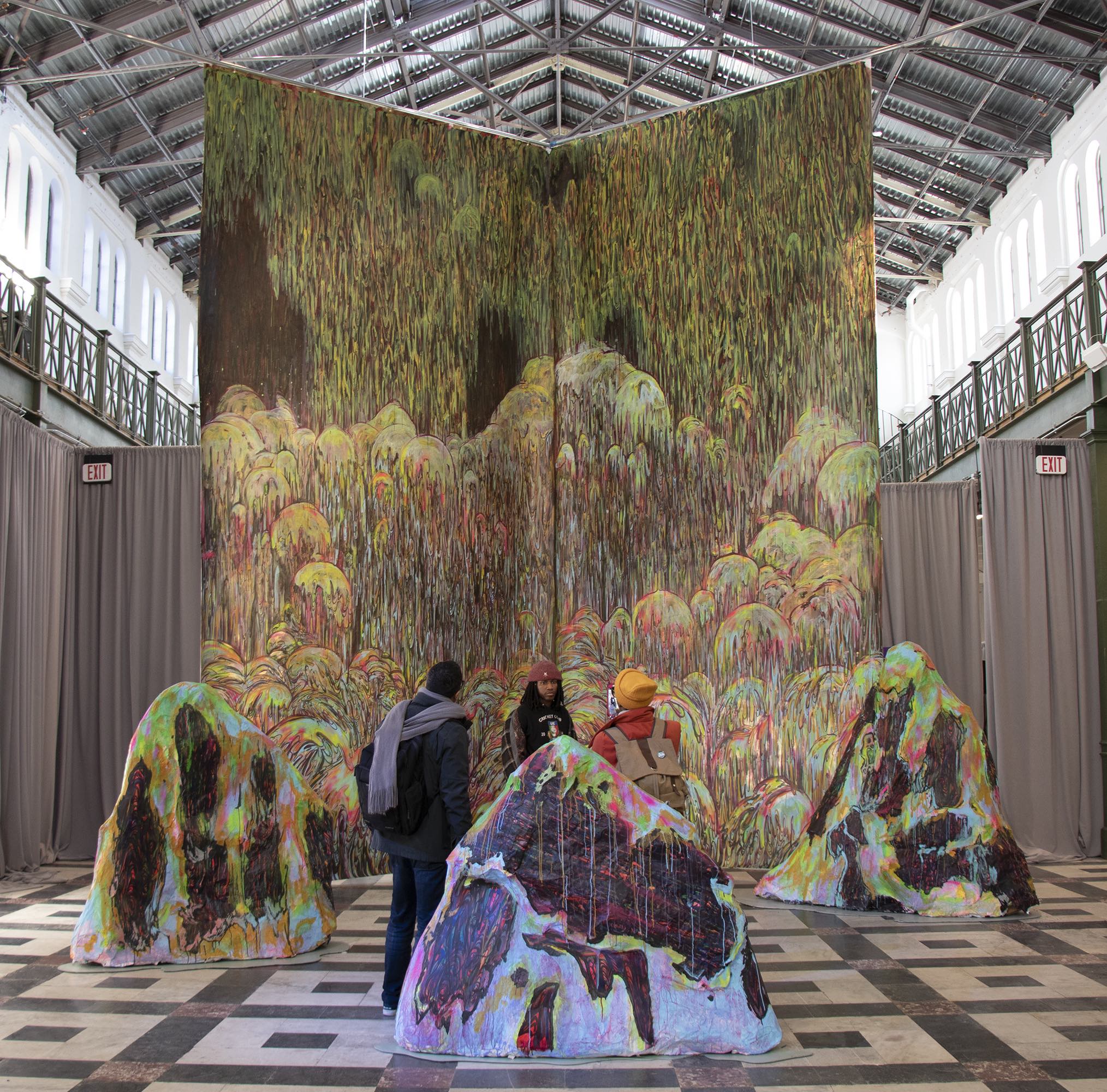
Baltimore artist Phaan Howng, a graduate of the Maryland Institute College of Art (MICA), focuses on site-specific installation works. Here, she discusses the impetus for creating Niagara and the legacy of environmentalism in landscape painting.
“After I graduated from Boston University, I wanted to keep painting, but I didn’t want to get a job. I’m originally from South Florida, so I moved back there and got stuck. I ended up somehow working for Foxconn, a third party manufacturer for iPhones and laptops. I thought it was the job I had always wanted, because it came with health care and offered paid vacations during which I could work on my painting. But I didn’t get to make art like I thought I would. This was right before the Mayan Apocalypse. It didn’t happen, obviously, but I would read about it at work and think, ‘What if the apocalypse does happen and I die in this cubicle and my ghost has to live in this cubicle for the rest of eternity?’ It sounds ridiculous, but it was an existential crisis. And with that, I got out of there.
I am attracted to fluorescent colors. These are colors that you would never experience in nature unless you came upon some sort of manmade environmental disaster. But fluorescent colors are also used in safety situations. Construction workers wear bright colors to say, ‘Watch out for me!’ We have these intertwined relationships with fluorescents. Niagara was created for the Sondheim semifinalist show last summer. The show was at MICA, and the curator offered me a wall. I wanted to create an epic toxic waterfall that people could stand in front of, and it would look like they were going to be consumed by this painting. I called it Niagara because I was reading Rob Nixon’s Slow Violence and the Environmentalism of the Poor at the time. Niagara Falls is so massive and so close to superfund site Love Canal. I imagined all the grossness of Love Canal seeping out into the waterfall. The painting was then exhibited at the Smithsonian’s Arts and Industry Building, and I added these smaller mountains to guide the visitors through the space.
Having worked at Foxconn, my understanding the supply chain influenced how I thought about our collective abuse of nature. When I was managing these flip phones for Motorola, I asked my guy in China where we could get this specific part. And he said, ‘Someone’s got to go mine the earth for it and it requires a minimum order quantity.’ Humans going and mining the earth for this small component for a company to fulfill its order—it was just so dirty and wrong. I have an interest in the history of landscape painting. The Hudson River School painters were like, ‘This is the land, this is what’s at stake with the rise of industrial production.’ So landscape as a genre really puts you in your place and contextualizes your setting. I think that’s valuable—how else would you reflect on your place within the history of the land?”



